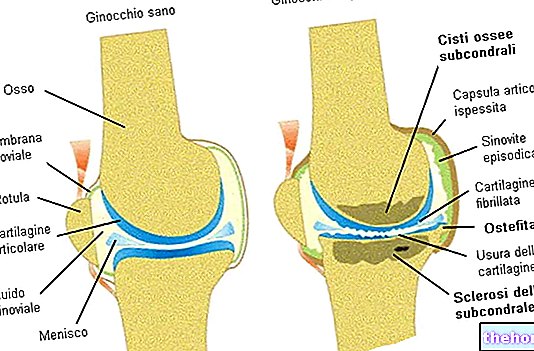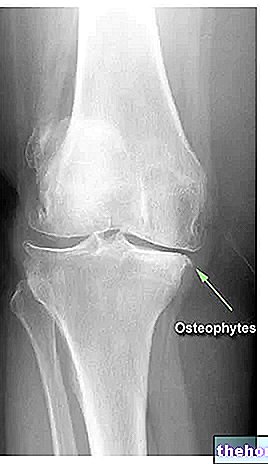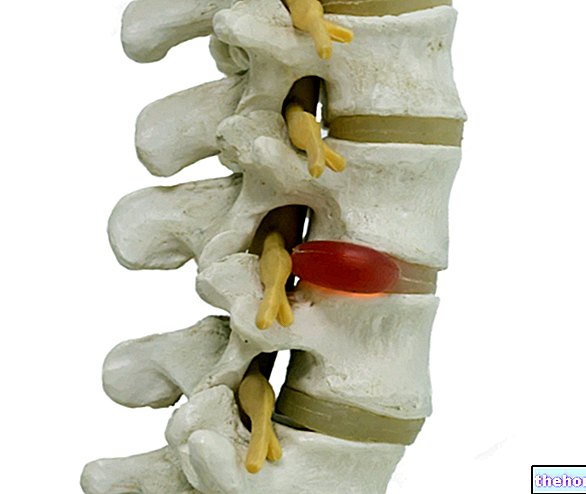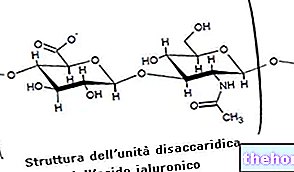Generality
The Colles fracture is the characteristic fracture of the distal end of the radius; the radius is one of the two bones that make up the skeleton of the forearm and its distal end is the bone section closest to the hand, also involved in the important joint of the wrist.

X-ray of a Colles Fracture. From Wikipedia.org
At the origin of most cases of Colles' fracture, there are falls forward with the arms and hands extended, as if to protect oneself from impact with the ground or the floor.
The most important risk factors include: advanced age, childhood, osteoporosis and vitamin D and / or calcium deficiencies.
The typical symptoms and signs of a Colles fracture consist of: pain, swelling and hematoma.
For an accurate diagnosis, the following are essential: physical examination, medical history and X-ray examination.
Treatment involves generic therapy and specific therapy. Specific therapy can be: conservative, if the fracture is not severe, or surgical, if the fracture is severe.
What is the Colles fracture?
Colles fracture is the term with which doctors refer to all fractures of the distal end of the radius.
Together with the ulna, the radius forms the skeleton of the forearm; its distal end (or distal epiphysis) is the bony portion closest to the hand and including the articular surface which, joined to the bones of the scaphoid and semilunar carpus, forms the so-called wrist joint.
ORIGIN OF THE NAME
The Colles fracture is so named in honor of Abraham Colles, the Irish surgeon who, in 1814, described for the first time the aforementioned type of bone injury, without using the help of X-rays (not yet invented!).
The X-ray description of the Colles fracture came about thanks to Ernest Amory Codman.
SYNONYMS
In the medical-pathological field, the Colles fracture is also known by other names, including: fracture of the distal radius, transverse fracture of the wrist, "fork back" fracture and "bayonet" fracture.
Causes
Falling forward with arms and hands outstretched, as if to protect oneself from impact with the surface, is the main cause of Colles' fracture.
Among the less common causes of Colles' fracture, the continuous repetition of a stressful gesture or movement with the wrist and forearm deserves a mention: in these situations, the Colles fracture is an abuse injury (in English it is "overuse”).
RISK FACTORS
If traumatic circumstances arise, anyone can develop a Colles fracture.
However, statistics in hand, are risk factors for Colles fracture:
- The advanced age. With old age, the bones of the human being tend to weaken and, for this reason, to be more prone to fractures.
- The age of childhood. The skeletal system of children is not as strong as that of adults. Therefore, young people are more likely to suffer from bone fractures.
- The presence of osteoporosis. Osteoporosis is a systemic disease of the skeleton, which causes severe weakening of the bones. This weakening of the bones predisposes to the development of fractures.
- The practice of sporting activities, such as skiing, ice skating, etc., during which it is common to fall in a completely accidental way.
- An inadequate intake of calcium and / or vitamin D. Calcium and vitamin D are essential for the good health of the skeletal system. The lack of one of these two leads to bone fragility and a tendency to fracture.
The Colles fracture is particularly common among people suffering from osteoporosis. According to some statistical surveys, in fact, in subjects with osteoporosis its occurrence would be second only to vertebral fractures.
TYPES
Pathologists classify episodes of Colles fracture based on how and where the distal end of the radius breaks.
According to these parameters, there are at least 4 types of Colles fracture:
- The open Colles fracture: all Colles fractures are open in which the distal end of the radius, once broken, protrudes from the skin by laceration of the latter.
- Comminuted Colles fracture: All Colles fractures in which the distal end of the radius breaks in several different places are comminuted. A synonym for comminuted is multi-fragmented.
- The intra-articular Colles fracture: all Colles fractures are intra-articular in which the distal extremity portion (articular surface) that interacts with the scaphoid and lunate and forms the wrist joint is broken.
- The extra-articular Colles fracture: all Colles fractures are extra-articular in which the rupture of the distal end of the radius does not alter the normal anatomy of the wrist joint.
Symptoms, signs and complications
Episodes of Colles' fracture cause a lot of pain, so much so that the victim cannot grasp or hold objects.
Other typical clinical manifestations of Colles fractures are: swelling between the radius and wrist and the presence of hematoma between the radius and wrist.
COMPLICATIONS
Many years after a Colles fracture, patients may develop nerve compression syndrome, known as carpal tunnel syndrome, or they may have difficulty moving their wrist.
Diagnosis
For an accurate diagnosis of Colles' fracture, the following are essential: physical examination, medical history and an X-ray examination of the painful upper limb.
Therapy
Treatment of a Colles fracture includes generic therapy, valid in any case, and specific therapy.
Depending on the severity of the fracture, specific therapy can be conservative (or non-surgical) or surgical.
Once the bone has been welded, a course of physiotherapy is scheduled to restore the strength and muscle elasticity of the forearm muscles and which govern the movements of the wrist joint.
GENERIC THERAPY
The therapeutic indications valid for all cases of Colles fracture include: rest of the upper limb with bone fracture, immobilization of the wrist joint, application of ice to the painful point, administration of paracetamol or ibuprofen (an NSAID) for pain and elevation of the sore upper limb to reduce swelling or prevent it from getting worse.
CONSERVATIVE TREATMENT
Conservative treatment is indicated for all those cases in which the Colles fracture is not serious.
It consists in the application of a plaster between the hand and forearm, plaster that the patient must hold until the fractured bone is welded.
If the fracture is slightly displaced - but still minor - a manipulation reduction procedure may be necessary. The reduction of the fracture by manipulation serves to restore the original position of the fractured bone. This promotes the healing process.
SURGICAL TREATMENT
Surgical treatment is indicated for all those cases in which the Colles fracture is severe.
The operation consists of an operation through which the operating surgeon places the fractured bone sections in their original position and applies, on the latter, a series of screws and pins.
The screws and pins serve to keep fractured bone sections close together, thus promoting their bonding.
After carrying out the aforementioned surgery, the application of a plaster cast between the hand and forearm is foreseen to immobilize the fractured limb.
HEALING TIMES
Complete healing from a Colles fracture can take up to a year.
Patients must wear the cast for at least 6 weeks, after which they must pay close attention to the activities practiced. In fact, all heavy manual activities are not recommended for at least 3-6 months, depending on the severity of the fracture.
Despite healing, it is possible that the fracture site still causes pain over time. Typically, this sensation is dull.
Prognosis
The prognosis for a Colles fracture depends on the timeliness of treatment and the severity of the fracture.
Prompt treatment and a minor fracture have a positive impact on prognosis; conversely, late treatment and a severe fracture have a negative influence.
Prevention
Taking the right amounts of calcium and vitamin D, practicing continuous physical exercise in such a way as to have strong bones and a strong muscular system and wearing all the protections provided during activities in which it is possible to fall with the hands and arms extended forward are the main countermeasures, indicated by doctors, to reduce the risk of developing a Colles fracture.




























